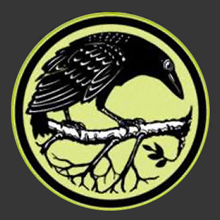Lately, snowshoeing has become the number one winter sport, even surpassing snowboarding! That being said, unfortunately the snowshoes of choice today are the modern aluminum and plastic type. Since a pair of traditional snowshoes is another item on my long list of projects that I want to make I thought that this would be a great introduction, and it sure was! What was really unique, and rare, was that my wife and I were the only ones there for this session! It being a wintery morning we figured everyone else decided to stay home in bed so we got one-on-one instruction and answers to our many questions!
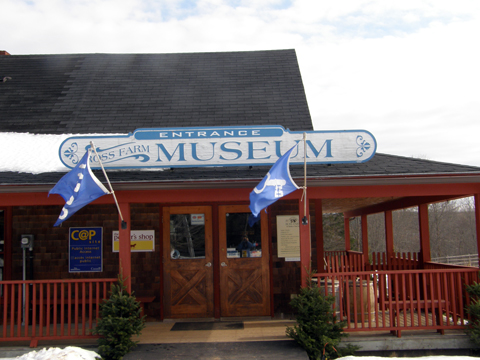
At the Ross Farm Museum you learn about what life was like on a Nova Scotian farm between 100 and 175 years ago and how the early settlers and their descendants lived and coped with the land around them. It is typical of the many small farms that existed throughout Nova Scotia when the province was still being settled.
The museum is located on 60 acres of the original 800 acre grant given to Captain William Ross. Five generations of the Ross family have lived and worked on Ross Farm between 1816 and 1970, when the New Ross District Museum Society purchased the property. Even today many of the people who work at Ross Farm are descendants of early settlers in the area!
Shortly after we arrived we enjoyed a nice cup of hot chocolate in Rose Bank Cottage, the original home of the Ross family. From there we went next door to the Farm Workshop where interpreter and Operations Manager, Barry Hiltz, seemed to be waiting just for us. After exchanging pleasantries he began to explain in detail the snowshoe making process.
The snowshoes begin by harvesting the Ash trees, in this case right on the farm, and the wood is then cut to size. It is easier to work the wood while it is relatively green. Once the wood is cut it is steamed and then it is put into forms.
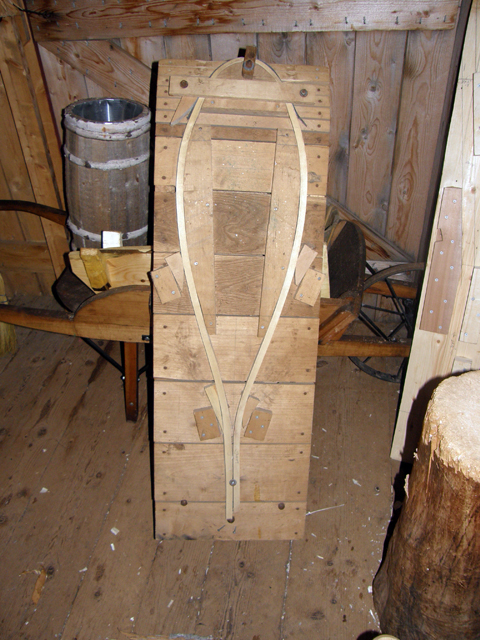
The forms are shaped and sized depending on the style of snowshoe that is being made. Types include the Huron or Traditional, the thinner Alaskan, the Bear Paw or the Ojibwa.
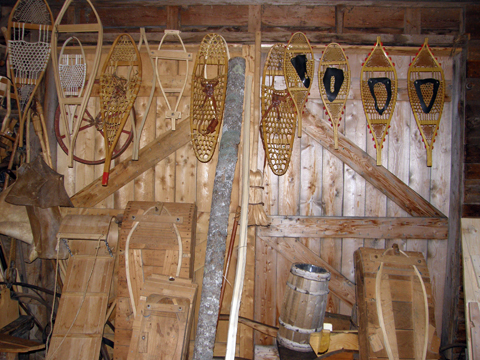
Once dried in the forms the shoes are removed, the crosspieces are inserted and the ends are brought together and riveted. The holes for the webbing are drilled and then it is time to do the webbing.
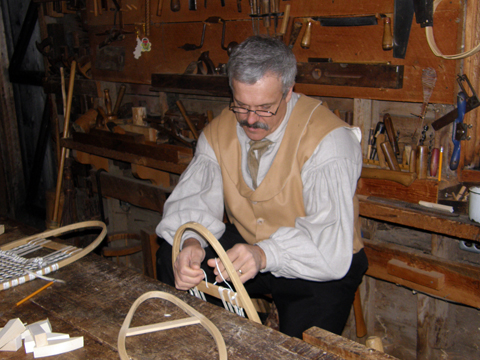
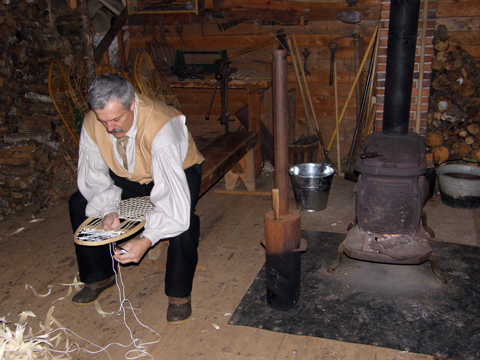
The tying of the webbing is a skill in itself! It takes a fair amount of knowledge and persistence to get it just right. Today it is more common to use nylon cord than the traditional rawhide. The nylon cord is much easier to work with, lasts longer and repairs can be more easily made. In addition to creating a strong base for the shoe a pleasing pattern is also considered, as can be seen here in the finished shoe:
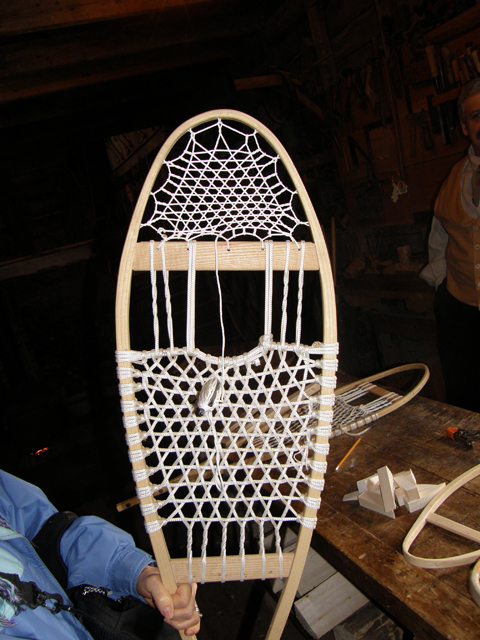
Once completed the shoes are heavily coated with a waterproof spar varnish to protect them. With yearly touchups these shoes can last a long time.
Here are some more photos of the workshop:
More forms for different size and style of shoes:
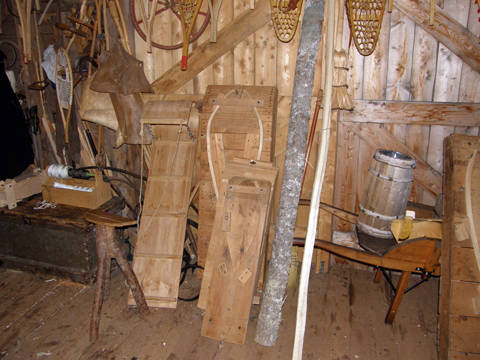
A stack of snowshoes next to the firewood pile:
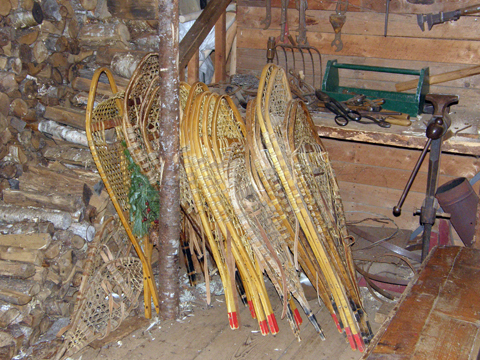
Snowshoes in different stages of completion:
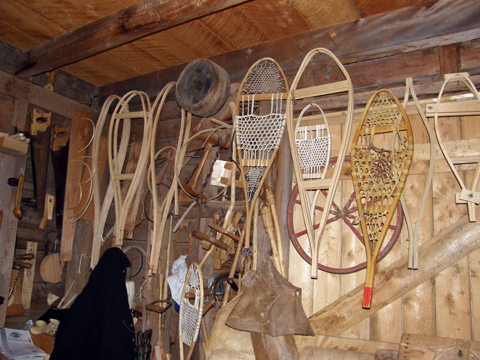
Various woodworking tools:
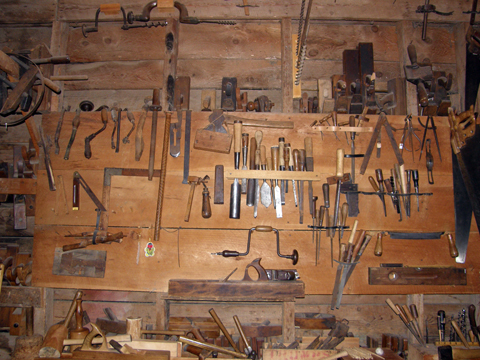
A shaving horse and a mound of shavings from being recently used:
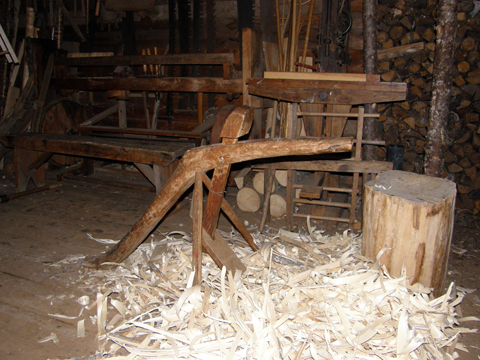
A treadle lathe that is still in use:
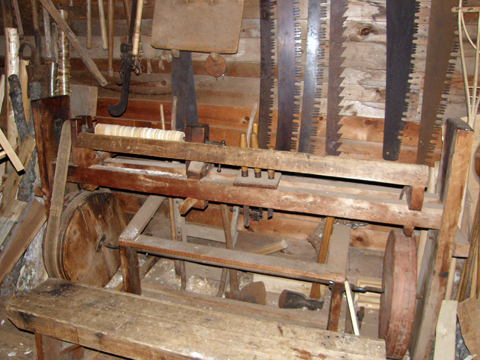
An Acadian style chair made of Maple with a rawhide seat that is almost completed:
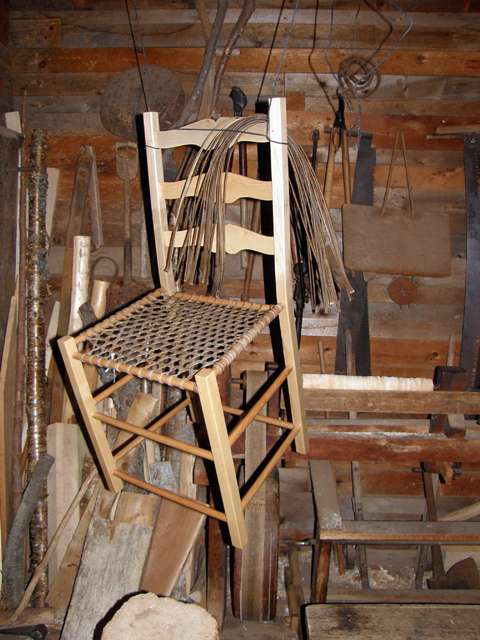
A snowshoe frame and one completed:
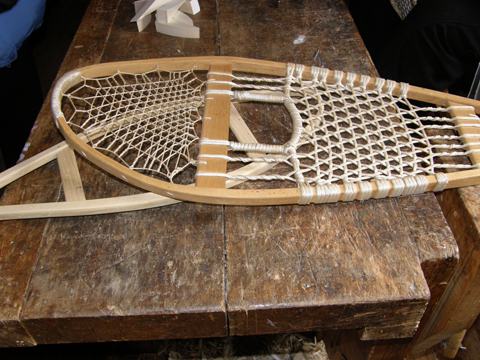
The process for making snowshoes is quite straight forward and simple, though tying the webbing appears to be harder than the woodwork! It is definitely an art.
Many thanks to Barry for allowing us to spend the morning with him. We received so much information about snowshoe making and gained a little bit of insight into the lives of those who, years ago, made these out of necessity and not pleasure.
Before we left Ross Farm we were invited to take a sleigh ride around the park on a sleigh pulled by a pair of beautiful Canadian horses. This was the icing on the cake of one wonderful day!
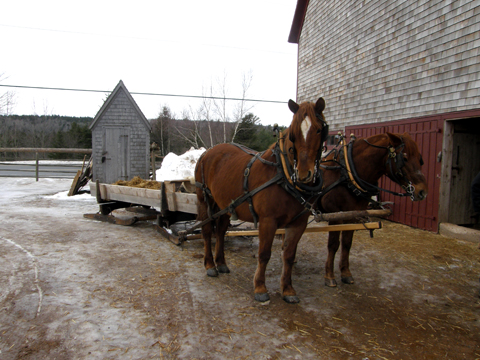
The Ross Farm Museum is truly a wonderful place to spend the day. They have activities and events throughout the year including barrel making, chair making, toboggan making, snowshoe making, of course, and more. Check them out sometime.
If you’re interested in learning more about making your own snowshoes you can find out more here in the Woodworkers Guide Directory and in
Building Snowshoes and Snowshoe Furniture, a book by Gil Gilpatrick.
As an avid hiker and woodworker this will be a great project to combine both of these passions. Maybe I’ll get to them in time for next winter. 🙂
Back to the shop…
